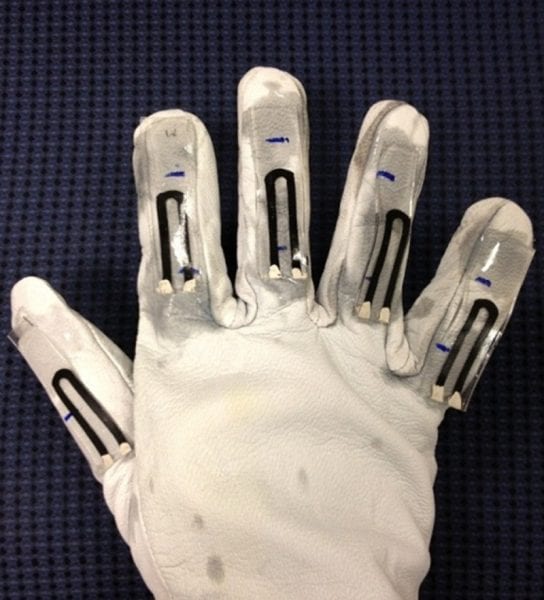
Gloves with motion detectors incorporating the graphene sensors.
Graphene with extraordinary electronic and mechanical properties has been extensively studied for nanoelectronic applications. However, the limited intrinsic stretchability of graphene has hindered its applications in future stretchable and wearable technologies. Pristine graphene will fracture at ~10% strain but wearable devices would require detection limits >50%.
Now, researchers in Singapore have developed an innovative method to fabricate stretchable graphene nanopaper that can be stretched up to 100%. This composite nanopaper, with a three-dimensional macroporous structure, was fabricated in a readily scalable manner based on crumpled graphene and nanocellulose, both of which are cost-effective and solution-processable. It was embedded in a silicone host matrix to achieve the excellent stretchability and also to maintain functionalities upon stretching, and the researchers believe it could be used for efficient human-motion detection such as the bending and stretching of fingers without any limits on the motion of the hands.

















